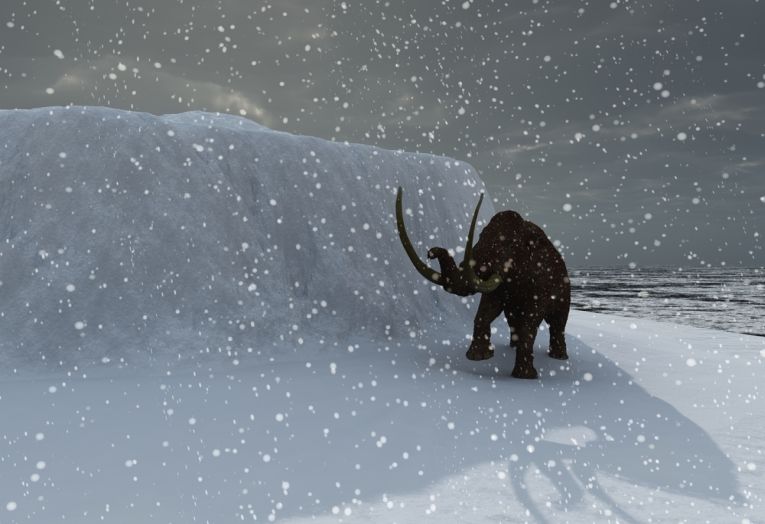How to imagine the Pleistocene? It was a period when drops in sea-level of up to 100m created land bridges and many Ice Ages enhanced speciation and the biogeographies of well-known animals changed. Extinctions towards the end of the Pleistocene included many large mammals and the major species of human apart from ourselves.
Ancient DNA from this time and more recently, tells us more about the woolly mammoth, Mammuthus primigenius than all the others because we have so much data on the DNA and 300 actual specimens that indicate distribution, migration and even the structural change within bone, tooth and tusk.
Genetic change through time is fascinating when it shows recolonisations and sad extinctions. The steppes and the tundra, from Western Europe to present-day Canada, that this species inhabited were a niche-habitat that suited it during the late Pleistocene. This was from 116bkyr to 12kyr (thousand years ago.) At the Western European end of its distribution, there seems to have been quite a lot of genetic divergence from other populations.
Indications are that some North American mammoths made it to Europe in the mid to late Pleistocene and may have survived into the Holocene period and the last European interglacial period, known as the Eemian. Warm conditions then seem to have finished off most of the big guys, 121kya before the present, except for a few northerly extremities (refugia.)
From these refugia, expansion took place across North America by a group containing the mtDNA Clade I lineage, across Central and Eastern Siberia by Clade II and across most of Europe by Clade III. These Clades had been isolated in their refugia for thousands of years but the re-emergence of the Beringian land bridge took place as the last Ice Age bit. It seems to have been used by the American population to cross to the west at 66kya.
Breeding with the Clade II lineage's population can be assumed for 20kyr until the extinction of the latter. At 32kya, the Clade I lineage would have met the Clade IIIs in Europe, but they had disappeared. The Clade I might have been more successful than the other two, as large body size was evident among the Europeans. This could have been a disadvantage, or regional climate change could have simply wiped them out.
Then again, this is the time of the Gravettian culture in Europe. Their earliest remains of 31kya coincide also with cave bear and collared lemming population reductions. What an amazing diet that would have been! It's possible Clade I could have finally gone down under pressure from the humans, but as the authors point out, "this seems less likely as this would not explain how Siberian mammoths could have immediately recolonized Europe, and then survived there for at least another 15 kyr." This leads us on to around 11kya when northern Siberia and NE Europe saw the last mainland Mammothus.
This early Holocene scenario includes little sign of recovery from a late Pleistocene loss of effective female population size worldwide. This species of mammoth had a very dynamic history of rise and fall, coinciding with the Ice Ages and other climatic effects. Reindeer, Arctic fox and polar bear had very similar relationships with their habitats. Somehow, we now have to work out why the refuges of the far north didn't work for this animal as it has for the other species.
We all love the elephant tribe so much, it is sad that this northern woolly species couldn't manage survival just one more time, even if it was only to give us a cultural fillip of a new cuddly mammoth image. Eleftheria Palkopoulou of the University of Stockholm and her co-authors from the Natural History Museum, London, The Russian Academy of sciences, the Royal Belgian Institute of Natural sciences and the Royal Holloway University in Surrey, publish their paper in the Proceedings of the Royal Society B: Biological Sciences.















